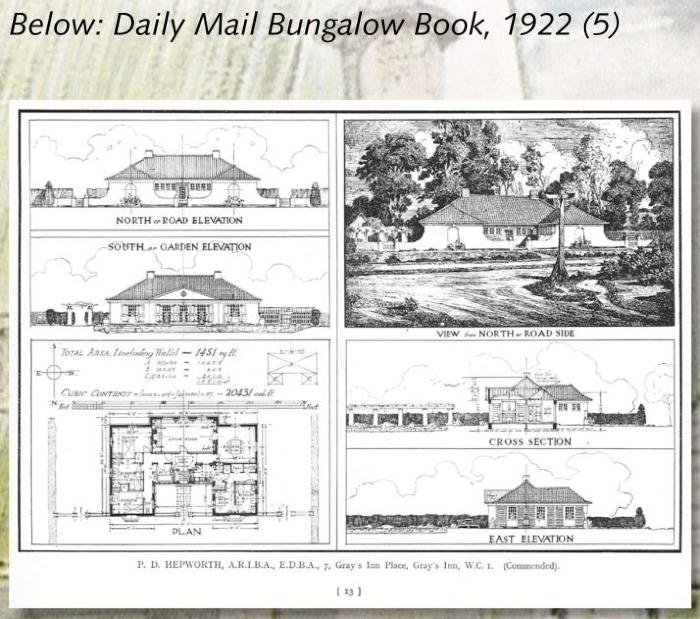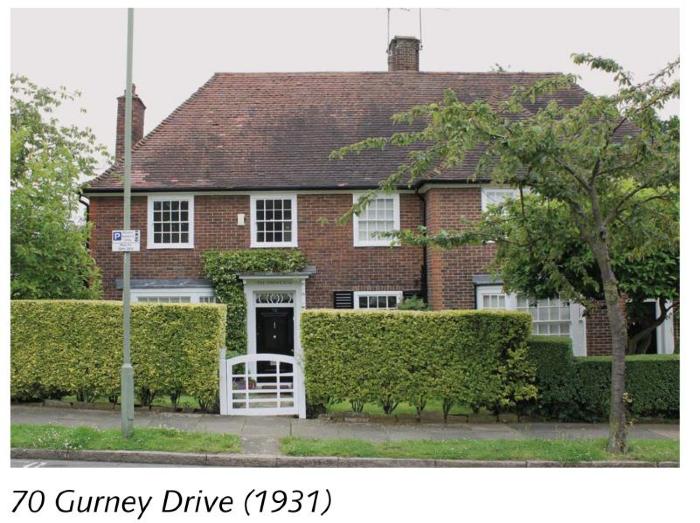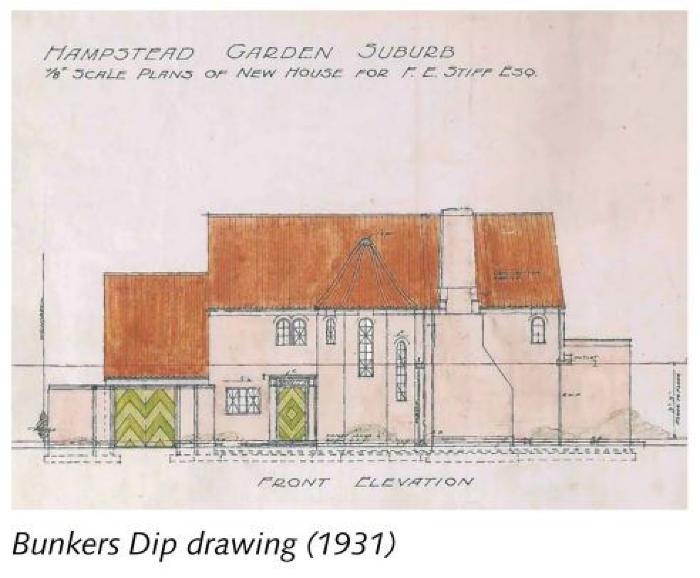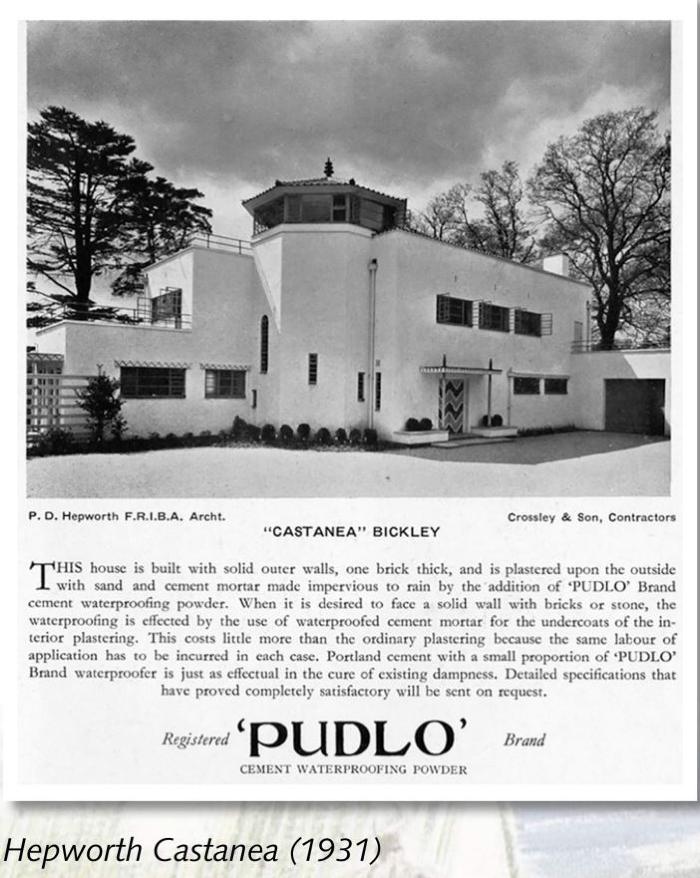To display in FULL SCREEN hover the cursor over the image above and click the top left zoom button
Philip Hepworth was a versatile architect and excellent draughtsman who led a varied career.

Born in Hampstead in 1888, Hepworth attended the Highgate School and then the Architectural Association School 1906-1910, with a stint at the École des Beaux-Arts in Paris.

In the 1920s Hepworth designed many grand houses and villas, including three on the Bishop’s Avenue, Gable Lodge (No. 30), Stratheden (No. 34) and White Walls (No. 40), all with distinctive white rendered walls and green pantile roofs characteristic of the exoticism trend, and in particular the ‘Cape Dutch’ style popular at the time.

Hepworth’s most complete group of houses on the Suburb, in Gurney Drive, was built in 1931 in a more restrained neo-Georgian manner yet with beautiful attention to detail. Hepworth even designed the garden gates to go with the houses. He was also responsible for Bunkers Dip (101 Kingsley Way), an unusual detached house in the Arts and Crafts tradition with many quirky features including a distinctive stair turret on the front elevation, reminiscent of medieval and Germanic architecture.

Hepworth was also involved in projects of a larger scale. In the 1930s he won competitions to design the Walthamstow Town Hall and Assembly Hall, completed in 1942, and the Wiltshire County Hall in Trowbridge, completed in 1940. These two projects show Hepworth’s adaptability, able to master different architectural languages to suit the context of a given project. His later house designs also embraced Modernism. During the Second World War Hepworth was a member of the Royal Academy Planning Committee, producing drawings of monumental avenues, buildings and junctions to illustrate the committee’s vision of how London could be rebuilt after the Blitz.

Arguably one of Hepworth’s most important commissions was his work for the Imperial War Graves Commission from 1944 until 1957. In this role he designed 60 war cemeteries and memorials across France, Germany and the Low Countries, including those at Dunkirk, Bayeux and Reichswald